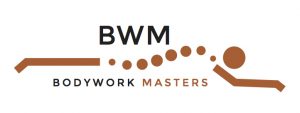What is cellulite?
Cellulite is the appearance of orange peel, lumps or dimples in the skin usually on the thighs are buttocks. A staggering 80-90% of women and a much lesser amount of men will have some grade of cellulite.
The appearance of cellulite can cause people to feel embarrassed and self-conscious but more importantly, cellulite can cause pain in the hip and knees if left untreated. People can pay tens of thousands of dollars to rid their skin of the unsightly appearance of cellulite. But we know a secret, bodywork can help play a big role in decreasing cellulite.
Bob Tricomi, LMT, owner of Bodywork Masters wants his clients to know that cellulite needs to be removed, not for cosmetic reasons, but for the health of your body. “When I see a client with cellulite it is common for that client to report pain in the hip and/or knee. What is happening is that the tissue around the outer thigh and buttocks has adhesions, or bound up tissue, that cause pulling and tightness to that area. If not released that bound tissue will cause pain in that area. I have found that using the Graston Method, glute cups and other techniques, I can get that once stuck tissue healthy again.”
What causes cellulite?
To know how to combat cellulite, it’s important to understand how the body is made up. First, women are much more likely to have cellulite than men for several reasons. Women’s fat cells and connective tissue are arranged in a vertical pattern, whereas men’s fat cells and connective tissue present in a criss-cross pattern. Men’s skin is thicker than women’s skin, and women’s higher fat percentage and hormones also are significant contributors. Therefore, it’s much more likely that women will see cellulite.
Other contributors of cellulite are a sedentary lifestyle, smoking and genetics, but even healthy weight-range people can have it. Age and hormones (especially estrogen) can decrease the thickness and elasticity of the skin thereby showing the fat cells under the surface.
There are 3 Grades of cellulite around thighs and buttocks:
- Grade 1 Mild: an orange peel appearance
- Grade 2 Moderate: Medium depth “cottage cheese” appearance
- Grade 3 Severe: 10 or more deep depressions with a “mattress” appearance and sever draping of the skin
A healthy lifestyle can reduce the risk of cellulite
To reduce the appearance of cellulite, there are lifestyle changes we can make.
- Decrease fat, carbs and salt intake
- Increase fiber intake
- Do not smoke
- Stay active
- Refrain from wearing tight underpants that cut off circulation to thighs and buttocks.
Bodywork for cellulite reduction
Costly lasers and freezing techniques can add up to thousands of dollars for minimum results but bodywork can provide much better results with less invasive techniques, and at a significantly lower price tag. Bodywork helps reduce the appearance of cellulite by increasing blood flow and circulation. Many of our techniques break up bands of stuck connective tissue. When the connective tissue is bound up, it gives the appearance of puckering of the skin. Other techniques that we employ stimulate the lymphatic system which allows waste material to be transported out of the muscles and tissues more efficiently.
At Bodywork Masters, we know the benefits of bodywork in reducing cellulite. We can not only see the decrease in dimpling and puckering of the skin, but we can also feel the break-up of bound connective tissue.
Some of the most effective techniques for cellulite reduction are:
- Graston Method: Using tools, sometimes heated, to scrape the surface of the tissue to break up adhesions.
- Myofacial Release: deep-tissue manipulation with a tool or hand to remove adhesions from the muscles, tissue, bones or organs
- Cupping: the use of this ancient Eastern medicine tool that uses a vacuum to create and stimulate increased blood flow to an area that in the body where the tissue is stagnant.
- Glute Cups: larger sized cups placed on the buttocks with an electronic vacuum to stimulate increased blood flow. Glute cups are new to BWM.
- Normatec boots: these boots are placed on both legs and provide compression starting at the feet to the hips. The series of compressions stimulates blood flow and drains the lymphatic system of toxin build up.
- TENS (Transcutaneous Electrical Nerve Stimulation): A therapy tool that uses electric stimulation to activate stagnant muscles and tissues
- Deep Tissue Massage: An intense massage with attention to muscle that is stuck to fascia, other tissue or bones with the intention of increasing range of motion, blood flow, and function of the muscles to work independently and release the build up of toxins in the muscles.
Many of these services are now available in 30 minute sessions. You can choose to focus on a specific technique, or you can “mix and match” a couple of techniques into an hour or more appointment.
Remember to let your Bodywork Masters therapist know if you are concerned with the appearance of cellulite and they can incorporate these techniques into your bodywork session. We know you will be happy with your results. Not only will you look better but you will feel better!
